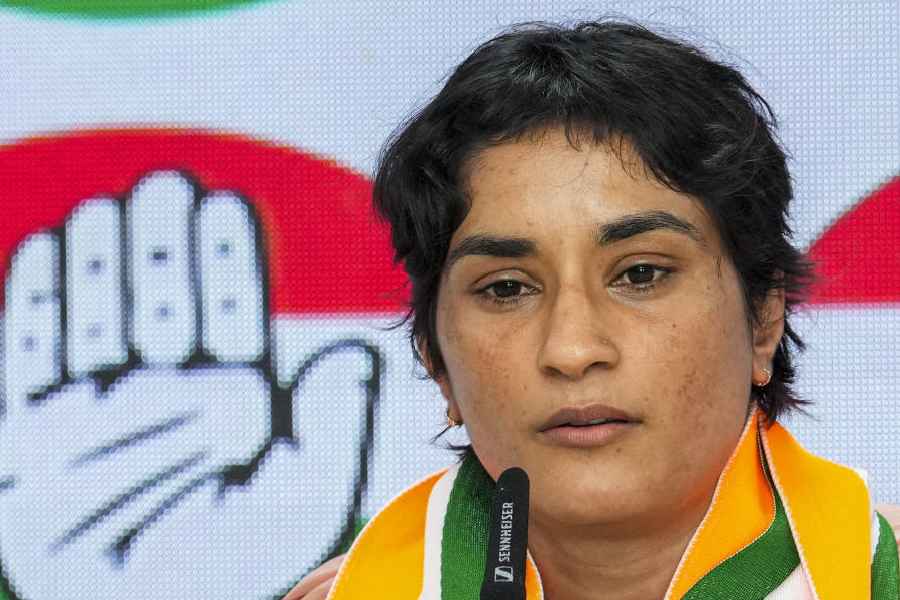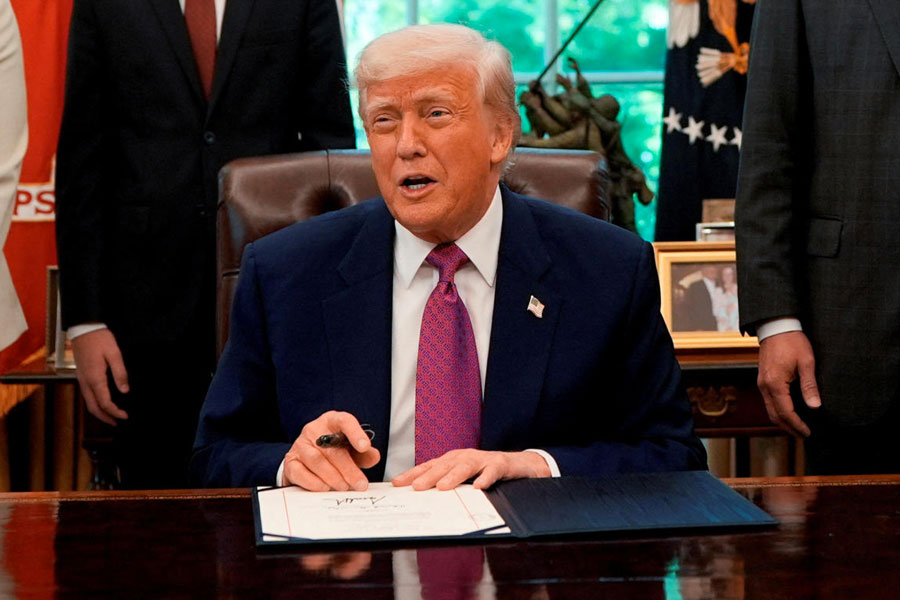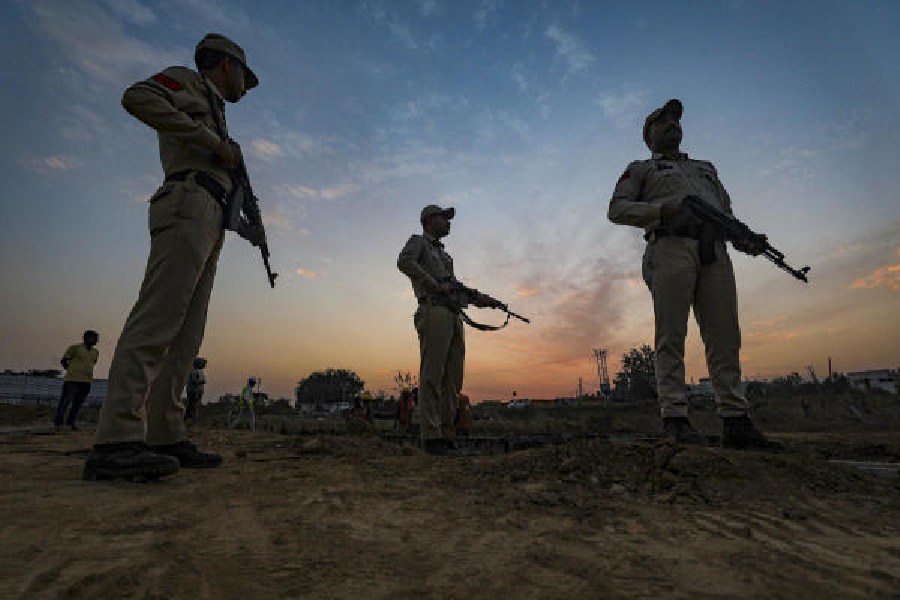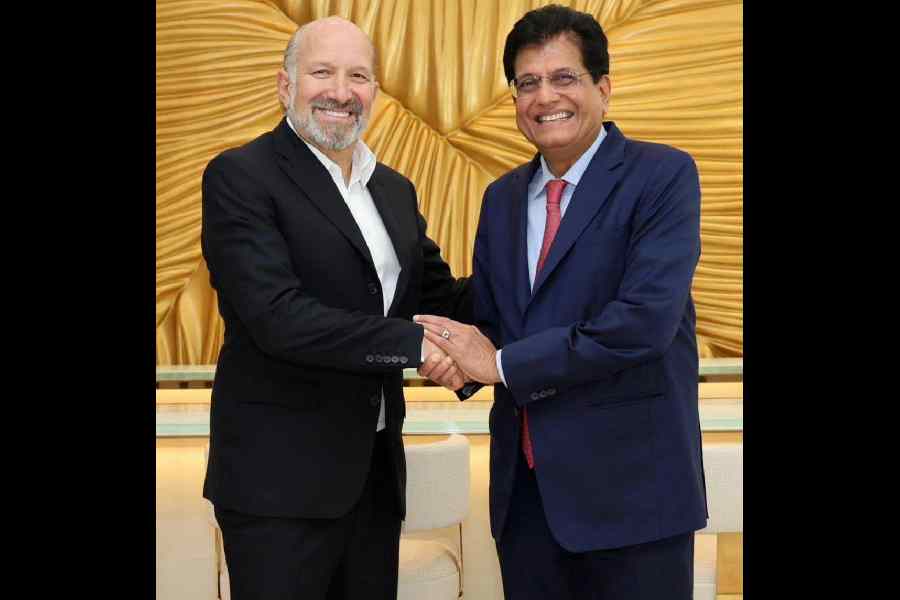 |
| Soumitra Chatterjee leafs through the Ray book that he and Sharmila Tagore launched on Friday. Picture by Pabitra Das |
She, a little shy but bewildered, in all her bridal finery. He, slightly nervous but elated, in a simple dhoti kurta. Together, they had entered the world of Apu ? and Satyajit Ray ? 46 years ago.
The launch of Satyajit Ray: A Vision of Cinema ? to mark the golden jubilee of Pather Panchali ? at the British Council on Friday evening found Sharmila Tagore and Soumitra Chatterjee coming together to relive memories of their ?mentor?, along with photographer Nemai Ghosh. The talk was moderated by Barun Chanda, Sharmila?s co-actor and Ray?s leading man in Seemabaddha.
?It is a very emotional experience? Going through his hand-writing, his kheror khata, his smile. It opens a floodgate of memories for us,? said Sharmila, now chairman of the Central Board of Film Certification, after unveiling the book.
Satyajit Ray: A Vision of Cinema contains text and captions by Andrew Robinson, photographs by Nemai Ghosh and drawings by Ray himself. ?The book reveals Ray as a film-maker, a family man and a Calcuttan,? added the actress who began her celluloid journey as Aparna, along with Soumitra, in Apur Sansar.
?I was very very interested in theatre and never thought films could be so interesting until I saw Pather Panchali. I met Ray when he needed an actor for the lead role in Aparajito, but I wasn?t selected because I was too grown-up for the role. Many years later, he told me that he had decided to make the third part of the Apu trilogy after seeing me,? reminisced Soumitra.
?Manikda prepared me without letting me know. He would supply me with books on cinema and acting, take me to film shows, specially Hollywood on Sunday mornings? The first one we saw together was The Lost Weekend,? Ray?s favourite actor shared with the audience comprising governor Gopal Krishna Gandhi and film-maker Mrinal Sen.
?He would never lecture us and gave us enormous freedom. But he would also restrain veteran actors who tended to get a bit theatrical,? added Soumitra, before dwelling on the two-page note that Ray had handed him to help become Apu, and the hand-written scripts that both he and Sharmila still treasure.
Of the five films she did with Ray, Sharmila admitted the ?child-woman? in Devi was the ?most complex role? she has ever played. ?It?s like watching somebody else today... But if you ask me what was the most striking aspect of Ray as a film-maker, I would say it was his ability to bring the most out of you with least effort. And although his films are culture specific, they have a timeless appeal.?
Nemai Ghosh, who shadowed Ray on and off the sets with his camera, discussed how the maestro had initiated him into photography.
?I learnt framing by watching him work on the camera. He would always encourage me and now I have a collection of 90,000 photos of Ray,? said the lensman, having captured Ray in some of his rarest moods.










